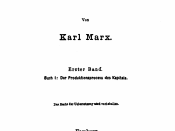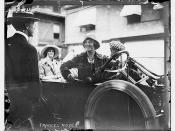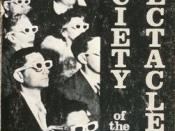In 1957, a merging between the Letterist International and COBRA art groups took place. The result was the Situationist International, a group that sought to redefine revolutionary theory. The group was a kind of global critique of capitalism, and they were very much influenced by Marxist theory. Though small, group membership included artists from numerous different countries, with Guy Debord emerging as the dominant member. They were active mostly in France, but had meetings held in Germany and Italy as well.
Further influences of this fusion can be traced from Dadaism, Surrealism, and Fluxus as well. The Situationist International had recognized, however, that Dada destroyed art without surpassing it, while Surrealism surpassed art without destroying it. In their view, it was necessary to do both. They realized that art could not be fully realized as long as capitalism existed. Believing that the demolition of the forms of media of high culture had already been demolished before by such groups as the futurists, surrealists, and constructionists, they saw no point in doing this yet again.
Breaking the spell of the spectacle became their main goal.
With this major goal in mind, disagreements arose within the group between members who wanted to pursue an art career, such as Cobra artist Asger Jorn, and the core group. The major disagreement was based around Debord's insistence that "art could not be recognized as a separate activity, with its own legitimate specificity, but must be dissolved into a unitary revolutionary practice". This insistence that one could not pursue an art career if one wanted to change the world had effectively put an end to the earlier artistic endeavors of the group. The result was a much smaller, but much more committed, group.
One of their biggest contributions was détournement, or "culture jamming", a politicized contextual...



Good paper
The paper is nicely written and informative
0 out of 0 people found this comment useful.